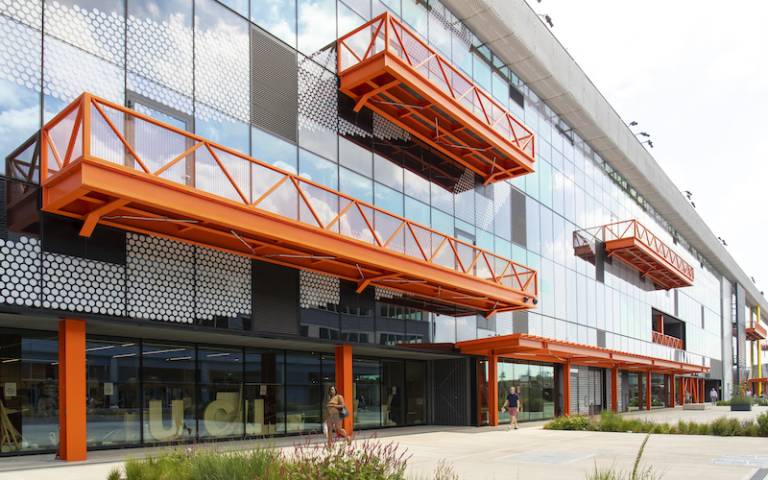UCL Here East campus receives investment in new lighting, building monitoring and indoor air quality equipment for health and energy efficiency research

New lighting, building monitoring and air quality research equipment has been funded through the UCL Research Capital Investment Fund to further the UCL Institute for Environmental Design and Engineering’s teaching and research.
Researchers from three teams at the UCL Institute for Environmental Design and Engineering have successfully secured funding from the UCL Research Capital Investment Fund (RCIF).
The new equipment will be housed in our Environmental Design and Engineering Laboratories at UCL Here East will enable our research teams and students to undertake further research into lighting and health, building energy efficiency, and indoor air pollution.
Equipment:
Modular dynamic spectrum light system (ColorDyne Ltd) featuring modular 'plug and play' LED light units with 36 individual DMX driven channels, sufficient to light two 5m x 6m rooms of 2.5-3m height nominally to 5,000lux horizontal at D65.
Usage
The system will be custom designed representing a substantial expansion of IEDE's existing dynamic spectrum system to support future research and teaching. Designed as a system, the 36 channel modular boards will be built to allow individual of fixing LEDs and easy create of arrays suitable for different test locations allowing researchers to vary outputs and rendering the system easy to maintain and upgrade. The increased number of control channels will enable simultaneous use of up to 36 different outputs (UV, Visible light and Near-InfraRed). No analogous systems exist with this capability.
Equipment
Yokogawa WT5000 Precision Power Analyzer, supplier: Yokogawa.
Usage
This equipment will support research into lighting equipment performance. By monitoring electrical power at different points within luminaires at high frequency we can get an understanding of power use and system efficacy. The addition of this equipment will extend our existing programme of building monitoring studies to include measurement of electrical power consumption. Power analysis data obtained from the unit will be very useful for student projects such as final year projects and dissertations. The unit itself will also be of use in teaching demonstrations, as students will be able to see how the behaviour of electrical equipment in the built environment relates to the power supplied to it and the outputs demanded.
Equipment
Air purifiers (£13,269.64 total incl. VAT): air purifier devices covering pollutants such as particulate matter, allergens, VOCs, formaldehyde and nitrogen dioxide – key pollutants for health. Covering different size spaces (e.g. to cover laboratory tests, multizone homes, or classrooms/ open plan offices etc.).
6 x Small 50 – 400 m3/h IQAir GCX ChemiSorber (Particulates, VOCs).
LoRa smart control, monitoring and occupant perceived feedback system (£13,235.5 total incl. VAT).
6 x Smart power supplies: To allow smart control of purifiers based on sensor data, air quality predictions or experimental schedules. Smart plugs will also be able to confirm accurately the usage of purifiers (essential for robust field test).
6 x Occupant feedback kiosks – to gather complimentary continuous occupant feedback on perceived air quality, self-reported productivity etc.
6 x LoRa particulate and 6 x VOC, PIR, Noise sensors - to detect concentrations and guide control of purifiers. Include occupancy detection and sound levels to provide contextual data to studies.
6 x People Counters– To inform room-based activity (e.g. resuspension) and to gauge non- participation bias in continuous feedback systems.
3 x Gateways to provide platform for the above across various locations.
Usage
The purpose of the air filtration units is fourfold:
To develop new experimental tests. For example, rebound tests where air purifiers can be used to remove given pollutants from a space, with the generation rate then observed.
To aid calibration procedures by providing controlled range of concentrations (supporting previous RCIF bids for air quality sensors).
To support current cognitive performance experiments covering particulates and VOCs in both lab and natural field experiments (e.g. multiple classrooms).
For studies on filtration units themselves, and in particular with smart controls and occupant perception.
Related News

 Close
Close

